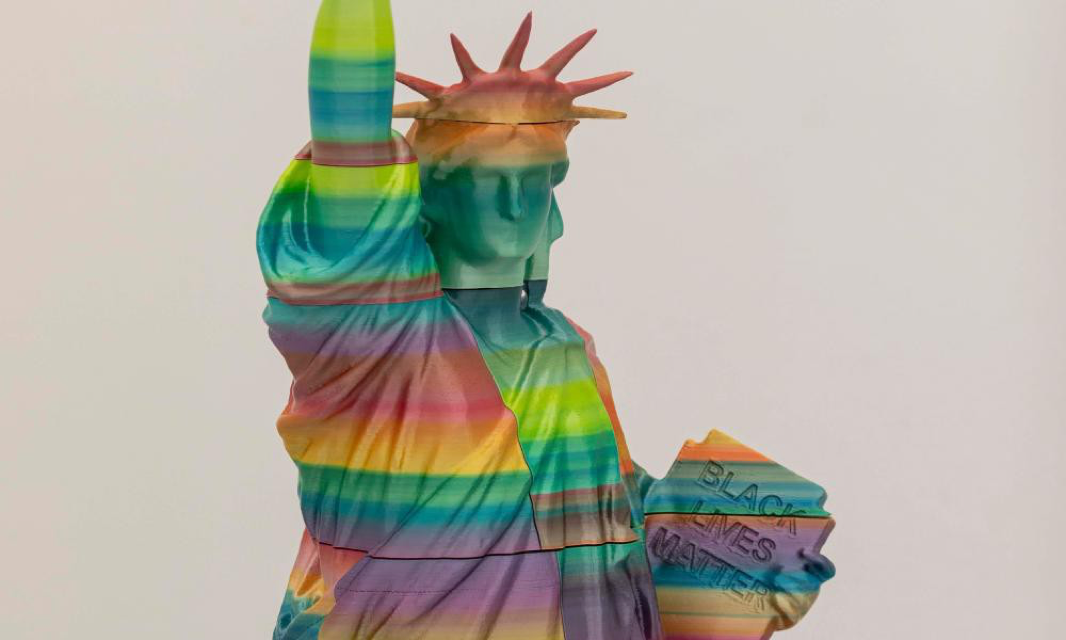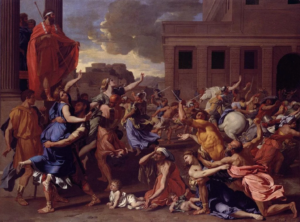Officials from Viktor Orbán’s rightwing party stoke outrage over two-week installation
It will be only one metre high, and will be on display for just two weeks. Nevertheless, a planned art installation dedicated to the theme of Black Lives Matter is causing uproar in Budapest, where the rightwing, nationalist government of Viktor Orbán has taken aim at the movement and all it represents.
The installation won a recent tender for public art in Budapest’s ninth district, an area on the city’s Pest side that combines streets of grand turn-of-the-century buildings with communist-era social housing projects.
“The BLM goals of opposing racism and police brutality are just as relevant in Hungary as anywhere else,” said Krisztina Baranyi, the ninth district mayor, citing the Orbán government’s relentless campaign against migrants and refugees, as well as the systematic discrimination against Hungary’s Roma minority.
In total, seven pieces were chosen to be displayed for two-week periods next spring in different locations, but it is the BLM sculpture that has created headlines.
The issue was seized upon eagerly by government officials and the government’s stable of loyal media. “Black Lives Matter is basically a racist movement. The racist is not the person who opposes a BLM statue, but the person who erects one,” said Orbán’s chief of staff, Gergely Gulyás.
Commentators on pro-government television chatshows threatened to pull the statue down if it was erected, and compared it to putting up a monument to Adolf Hitler. Others laughed that it was an absurdity given there are few black people in Budapest.
Hardly anyone looked at the details of the project. Notably, most pro-government coverage neglected to note that the statue will only be a two-week installation, not a permanent addition to the city.
“This whole scandal is typical of the way pro-government media works in Hungary. Everyone is angry about this and nobody actually knows anything about it,” said Baranyi. An independent, she took control of the ninth district late last year, in municipal elections that dealt a blow to the monopoly of Orbán’s Fidesz party as Budapest and most of its districts were won by the opposition.
Ahead of parliamentary elections in 2022, the government has been pushing its ultra-conservative credentials hard. Even in a pandemic year, the government has been busy passing legislation to further its positioning as Europe’s biggest champion of rightwing “traditional values” and fight against what Orbán refers to as “loopy liberals”.
In mid-December, the government amended the constitution to clarify that in a family, “the mother is a woman and the father is a man”, and made it explicit that only heterosexual couples can adopt children. The families minister, Katalin Novák, released a video telling women they “shouldn’t compete with men” or expect to earn the same amount of money. In May, Hungary ended legal recognition of gender changes for trans people.
The government also recently launched a billboard campaign with the slogan “All lives matter” in Hungarian. Ostensibly, it relates to the fight against coronavirus but it seems likely the decision to use it was a nod to the culture war the government believes it is fighting, particularly as Orbán posted a video featuring the English-language version of the slogan on his Instagram account.
Péter Szalay, the sculptor behind the BLM project, said that after news of it broke, he had received a threatening email from a well-known far-right figure, promising he would be “punished” if the installation went ahead.
The sculpture, which will be made in 12 pieces using a 3D printer and put together using magnets, is a “paraphrase of the Statue of Liberty”, said Szalay. The figure kneels, lifting her right hand in a fist, and holds a tablet with the inscription “Black Lives Matter”. There is also an LGBT-rights theme to the installation, with rainbow colours used to illuminate the monument.
Szalay said that despite the government reaction, the work was not meant as a show of support or solidarity with the BLM movement. “It does not declare itself on the side of or against BLM. According to my artistic purpose, it is undecidedly swaying between the two readings,” he said.
The art tender was organised by Baranyi’s deputy, Suzi Dada of the satirical Two-Tailed Dog party. She said she wanted to restart a tradition of public art, something for which the current government has little time. “For Fidesz, culture politics is all about historical memory and memorials, relativising Hungary’s role in the second world war and painting us as victims,” she said.
In the year since she took office, Baranyi said it had been hard to implement new policies, owing both to the coronavirus pandemic and a government funding squeeze that she estimates has shaved off about a third of the district’s budget. In mid-December, she was engulfed in a new scandal when a recording was leaked of her using antisemitic language. She has claimed it was taken out of context and has said she plans to sue public television.
When it comes to the BLM installation, Baranyi said she realised that the government campaign was working well when she stepped into a taxi in recent days. The driver, unaware of the identity of his passenger, began a long and abusive rant about Baranyi, saying he had heard she wanted to build a monument to gay black people.
“I tried to explain to him the real story, and the amazing thing was that he wouldn’t believe me, even though I explained I knew all about it. He said he knew he was right because he had read it in the newspaper,” she said.
Additional reporting by Flora Garamvolgyi




